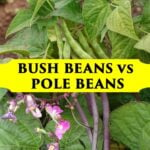Bush Beans vs Pole Beans – Which Should You Grow?
This post may contain affiliate links. Read my full disclosure here.
Bush beans vs pole beans – which one is right for your garden? Beans are a staple in many home gardens, prized for their productivity, versatility, and ease of growing. We grow a few different types of bush beans and pole beans, spread in different garden beds so we can save seeds. Here’s a breakdown of the differences, benefits, and how to choose the right variety for your garden.
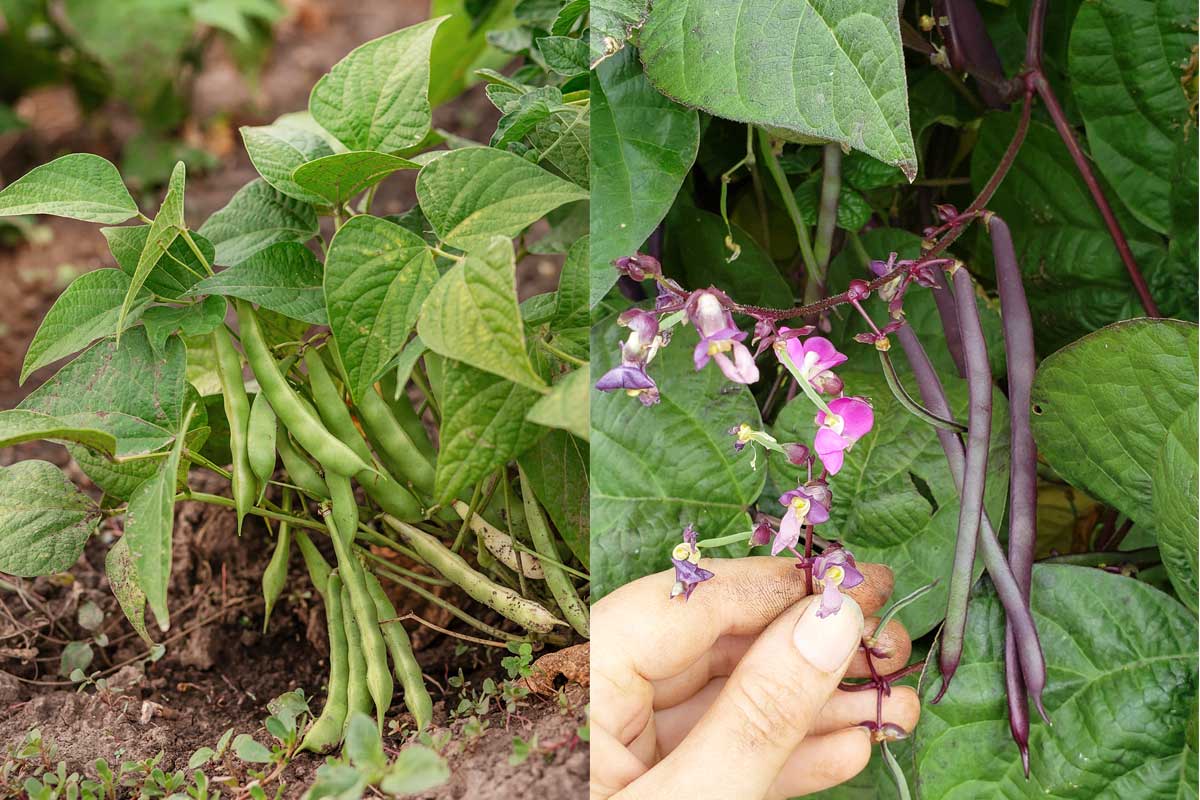
Table of contents
What Are Bush Beans?
Bush beans grow in a compact, shrub-like shape and typically reach about 12 to 24 inches tall. They don’t need support and tend to mature quickly, often producing beans all at once over a few weeks.
Pros of Bush Beans
- Quick harvest – usually ready in 50–60 days.
- Ideal for small or container gardens – no trellises required.
- Great for succession planting – plant every few weeks for a steady harvest.
Cons:
- Shorter harvest window – once they produce, they’re mostly done.
- Take up more ground space – since they sprawl, you need more room in your bed.
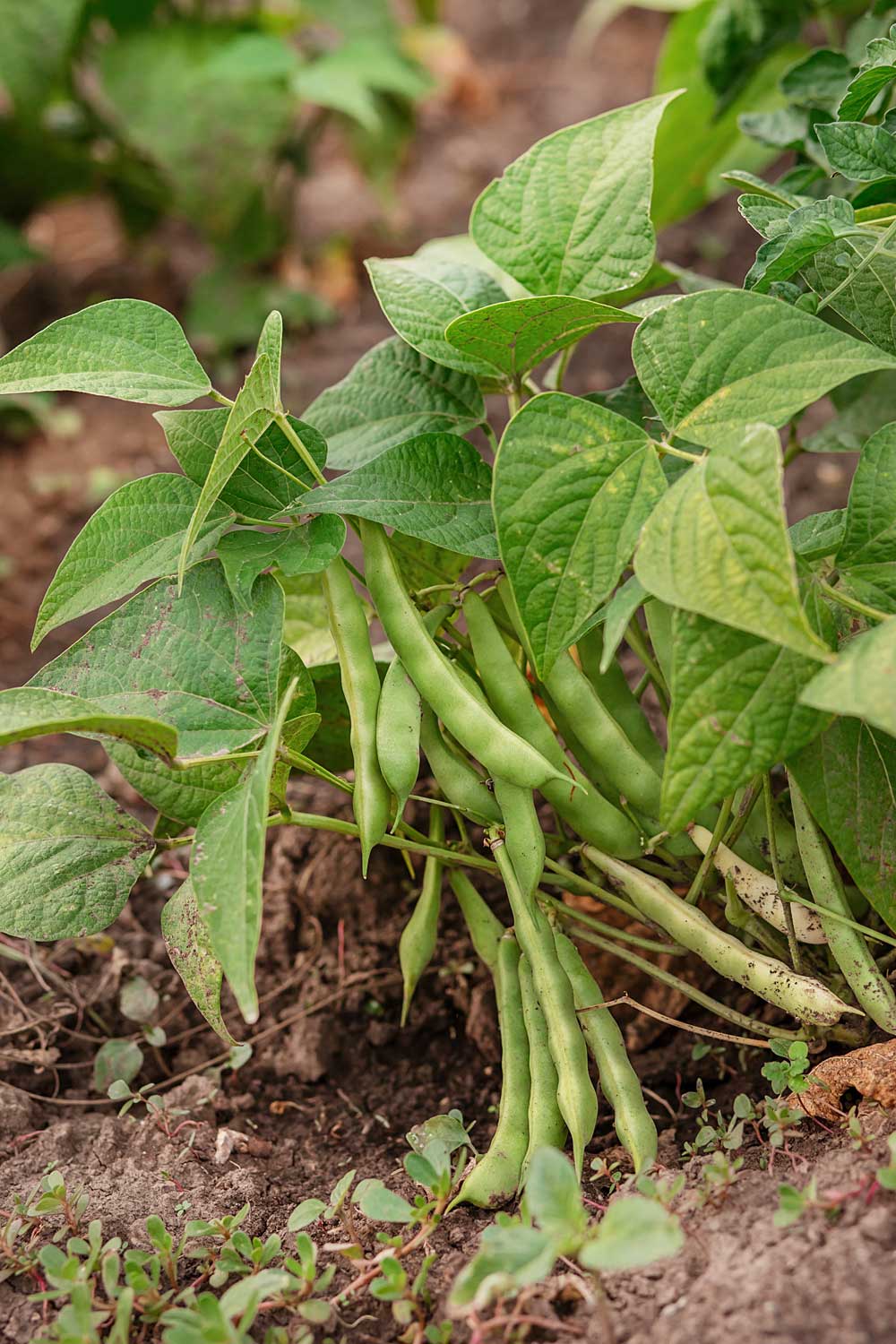
Popular Bush Varieties
These are snap beans, also known as green beans or string beans, which are grown for their edible pods.
- Provider – early, dependable producer.
- Blue Lake 274 – tender and flavorful.
- Contender – heat-tolerant and fast-maturing.
What Are Pole Beans?
Pole beans are climbing plants that grow 6–10 feet or more and need support such as a trellis, pole, or fence. They produce beans gradually over a longer period, often until frost.
Pros of Pole Beans
- Space-saving – vertical growth makes better use of small gardens.
- Longer harvest – keep picking and they’ll keep producing.
- Often more flavorful and tender – many heirloom varieties are pole types.
Cons:
- Slower to mature – typically 60–70+ days.
- Require trellising – setup takes more time and materials.
- Can shade out nearby plants – not ideal for every garden layout.
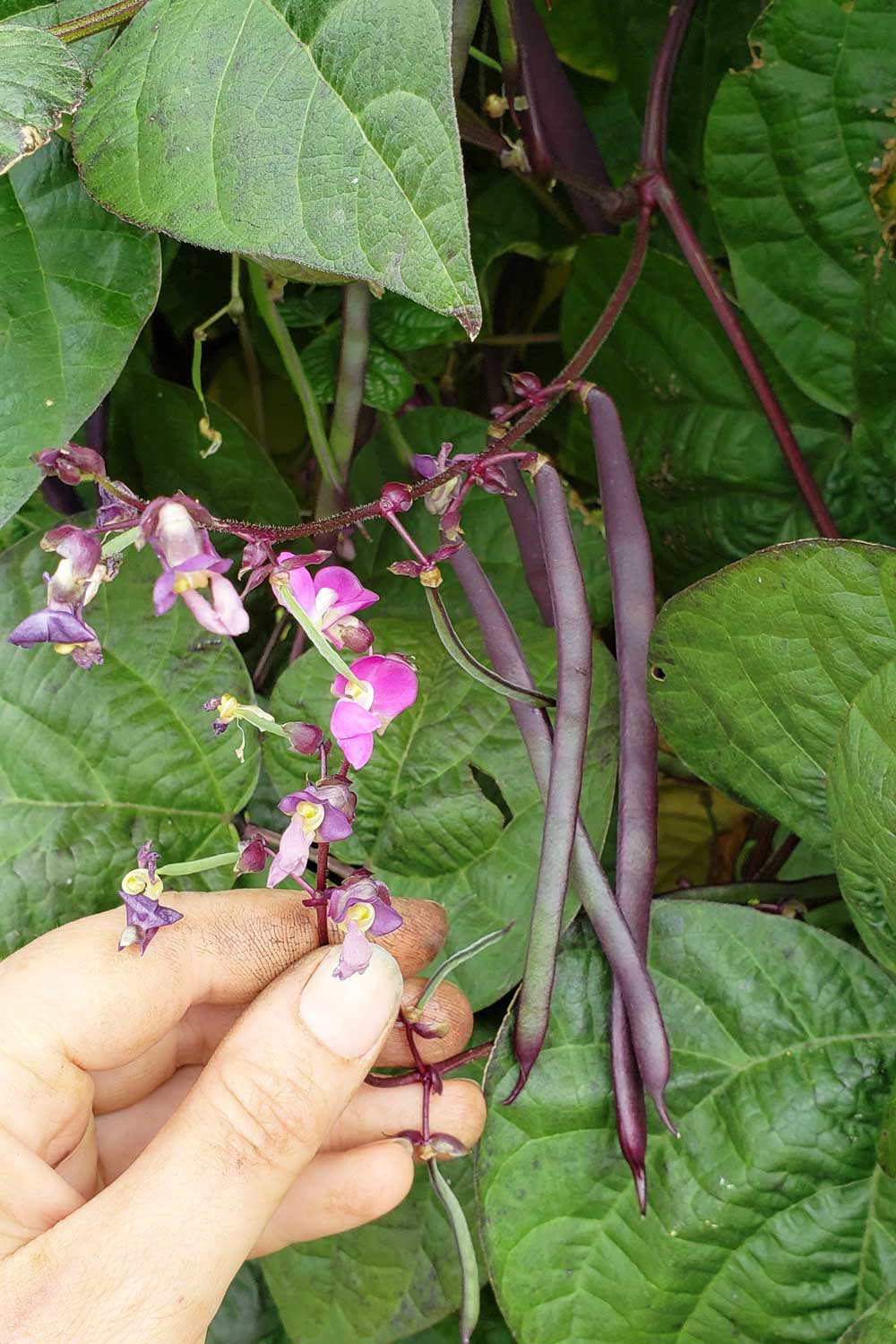
Popular Pole Varieties
These are also snap bean types.
- Kentucky Wonder – old-fashioned flavor and vigorous growth.
- Blue Lake Pole – similar flavor to bush version, longer harvest.
- Rattlesnake – striking pods, heat-tolerant, and productive.
Our favorites:
Would you like to save this?
- Emerite – French heirloom variety know for its abundant slender, stringless pods
- Purple Podded Pole Beans – heirloom variety with deep purple pods and vigorous production
Which One Should You Grow?
The best choice depends on your garden space, harvest preferences, and how much effort you’re willing to put into setup.
Choose bush beans if:
- You want a quick harvest or have a short growing season.
- You’re growing in containers or small raised beds.
- You want less maintenance and no trellis work.
Choose pole beans if:
- You have vertical space and want a longer, ongoing harvest.
- You’re interested in heirloom or specialty varieties.
- You like harvesting over time rather than all at once.
Growing Tips for Both
- Beans like full sun and well-drained soil.
- Avoid adding nitrogen-rich fertilizers; beans fix their own nitrogen.
- Keep soil moist but not soggy.
- Pick pods regularly to encourage more production.
- For pole beans, install trellises before planting to avoid disturbing roots.
Learn more at:
Grow Pole Beans with this Cheap and Easy Trellis and
What are Shell Beans? (Growing Tips, Usage, Storage)
To preserve your harvest, check out How to Store Green Beans (for Short Term or Long Term).
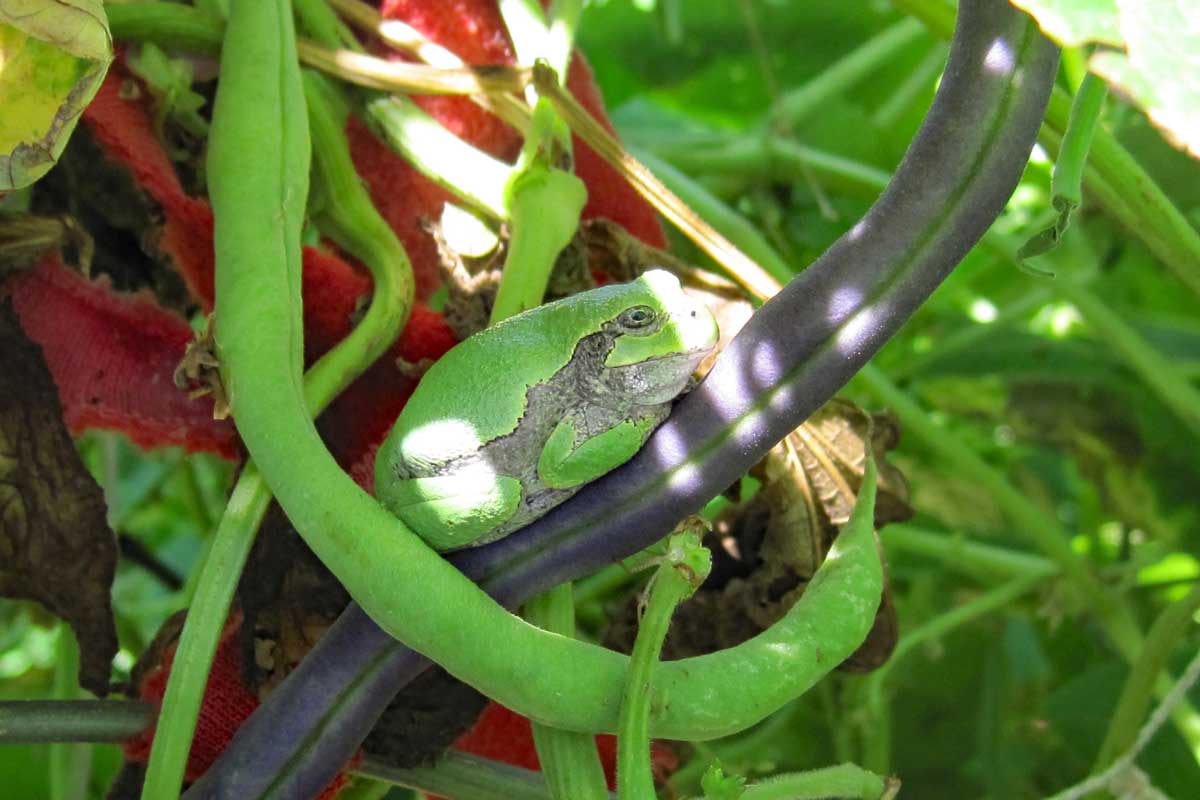
Bush Beans vs Pole Beans – Our Pick
There’s nothing wrong with bush beans, but we find pole beans work better for us. I still grow some bush shell beans that I harvest once, at the end of the season, for dried beans.
For my main crop, I switched to pole beans years ago and haven’t looked back. Here are 3 reasons I like pole beans better than bush beans.
Pole beans:
- Are easier to pick. It’s so nice to be able to pick beans standing upright! As I work down a row, I work up and down the plants so I get to shift positions.
- Pole beans stay cleaner. When your garden is wet, bush beans often end up with the beans covered in muck. With pole beans, the bulk of the crop is well above mud level.
- Are less bothered by pests and diseases. Since the beans grow up away from the ground, they get bothered less by ground pests, like slugs. Training plants up improves air flow, which reduces mildew and fungal diseases.
Sure, it takes some time to put up a trellis and take it down at the end of the season. To me, the benefits far outweigh the small amount of extra work.
For more tips on growing up instead of out, see “Vertical Vegetable Garden Ideas (Over 20 Photos)“.
I do grow some bush beans, typically for dried beans. Our current favorite is Tiger Eye beans, which have a wonderful buttery texture. With dried beans, I plant them, mulch, and harvest once at the end of the season.

This article is written by Laurie Neverman. Laurie and her family have 35 acres in northeast Wisconsin. They grow dozens of varieties of fruiting trees, shrubs, brambles, and vines, along with an extensive annual garden. Along with her passion for growing nutrient dense food, she also enjoys ancient history, adorable ducks, and lifelong learning.

